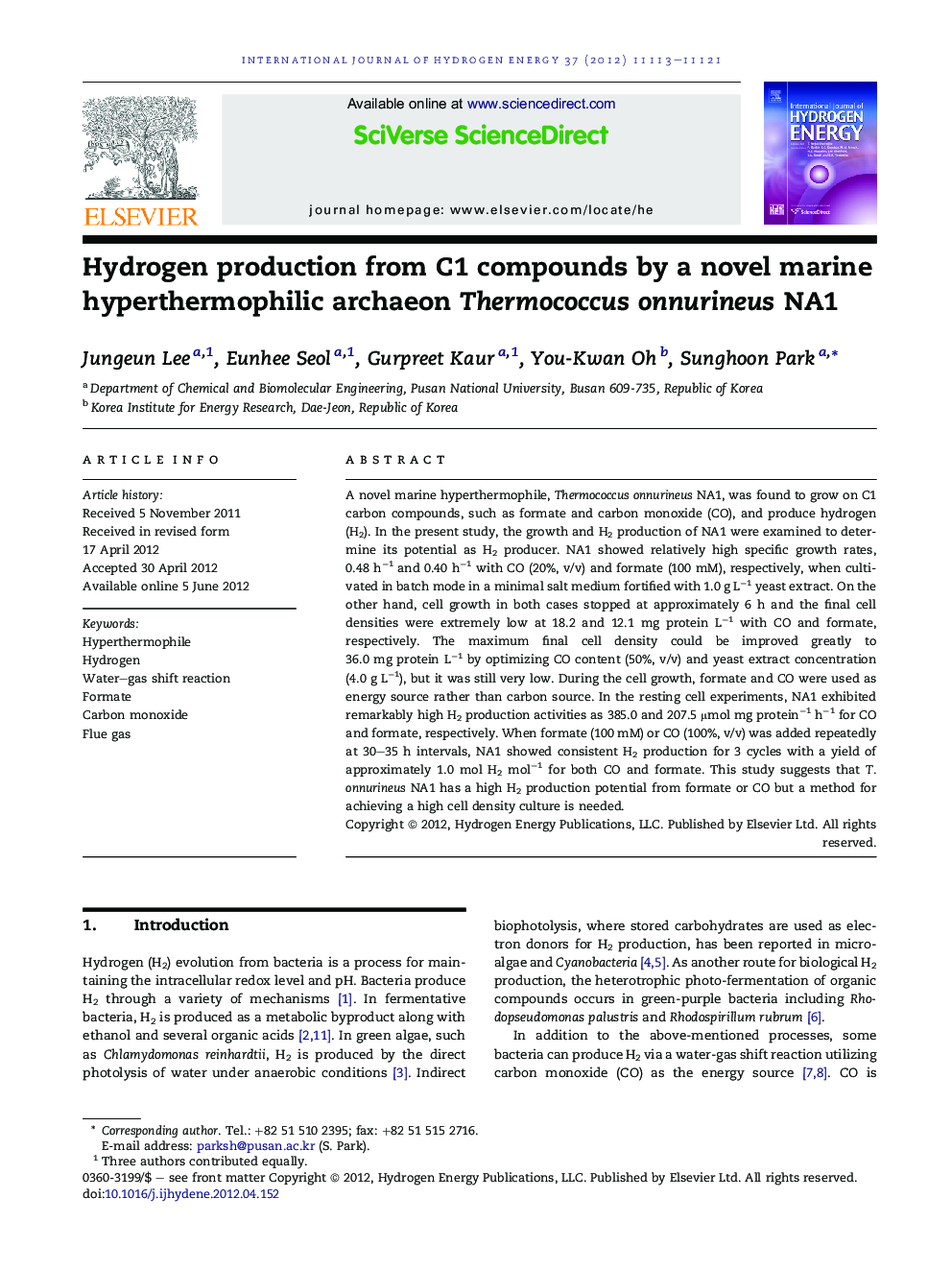| Article ID | Journal | Published Year | Pages | File Type |
|---|---|---|---|---|
| 1276275 | International Journal of Hydrogen Energy | 2012 | 9 Pages |
A novel marine hyperthermophile, Thermococcus onnurineus NA1, was found to grow on C1 carbon compounds, such as formate and carbon monoxide (CO), and produce hydrogen (H2). In the present study, the growth and H2 production of NA1 were examined to determine its potential as H2 producer. NA1 showed relatively high specific growth rates, 0.48 h−1 and 0.40 h−1 with CO (20%, v/v) and formate (100 mM), respectively, when cultivated in batch mode in a minimal salt medium fortified with 1.0 g L−1 yeast extract. On the other hand, cell growth in both cases stopped at approximately 6 h and the final cell densities were extremely low at 18.2 and 12.1 mg protein L−1 with CO and formate, respectively. The maximum final cell density could be improved greatly to 36.0 mg protein L−1 by optimizing CO content (50%, v/v) and yeast extract concentration (4.0 g L−1), but it was still very low. During the cell growth, formate and CO were used as energy source rather than carbon source. In the resting cell experiments, NA1 exhibited remarkably high H2 production activities as 385.0 and 207.5 μmol mg protein−1 h−1 for CO and formate, respectively. When formate (100 mM) or CO (100%, v/v) was added repeatedly at 30–35 h intervals, NA1 showed consistent H2 production for 3 cycles with a yield of approximately 1.0 mol H2 mol−1 for both CO and formate. This study suggests that T. onnurineus NA1 has a high H2 production potential from formate or CO but a method for achieving a high cell density culture is needed.
► A new hyperthermophile Thermococcus onnurineus NA1, produced H2 form C1 compounds. ► Cell grew fast (μ = 0.57/h); H2 production activity was high (3851 μmol/mg protein/h). ► Thermophilic H2 production by NA1 from CO or formate was efficient and robust.
